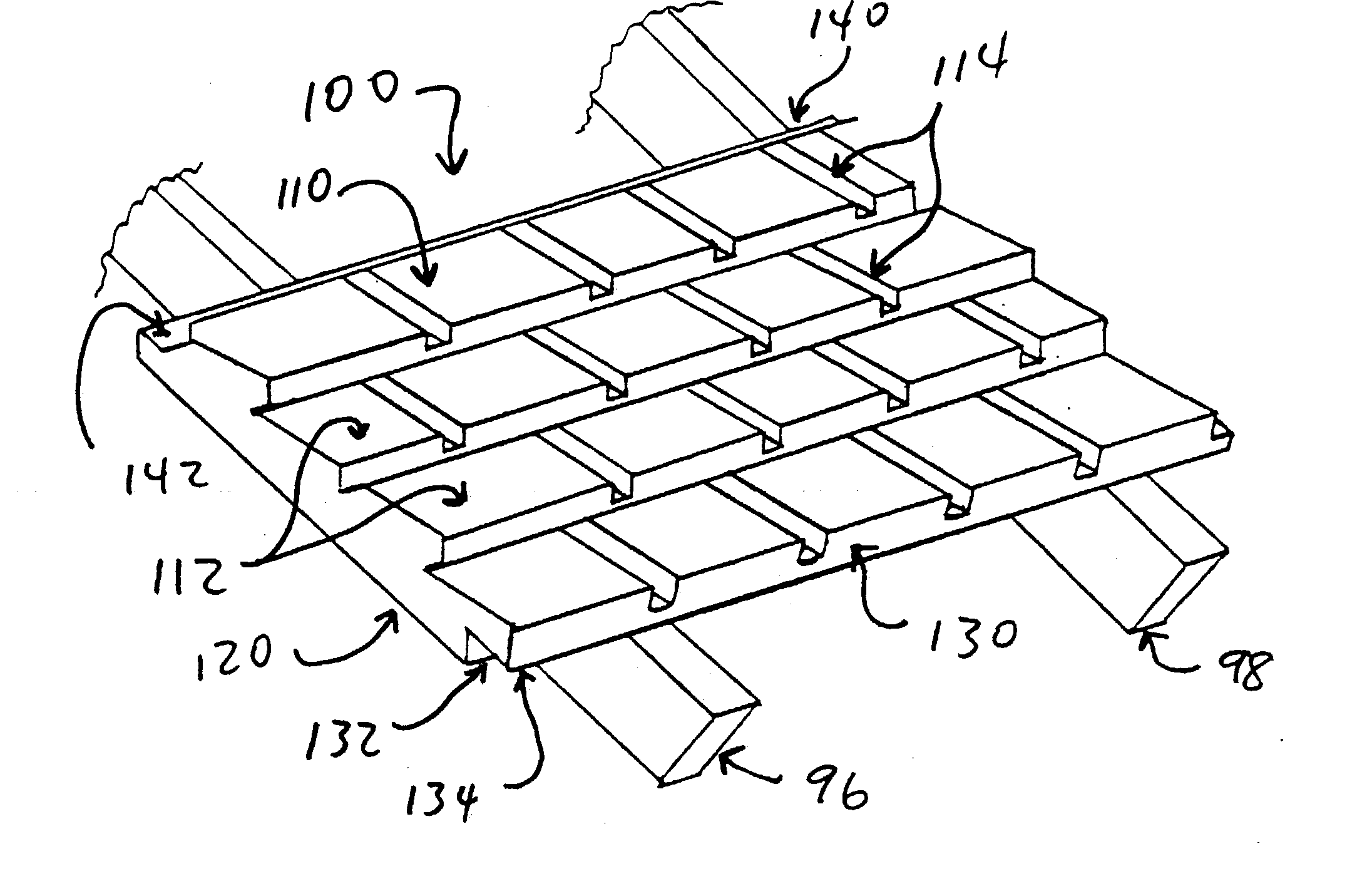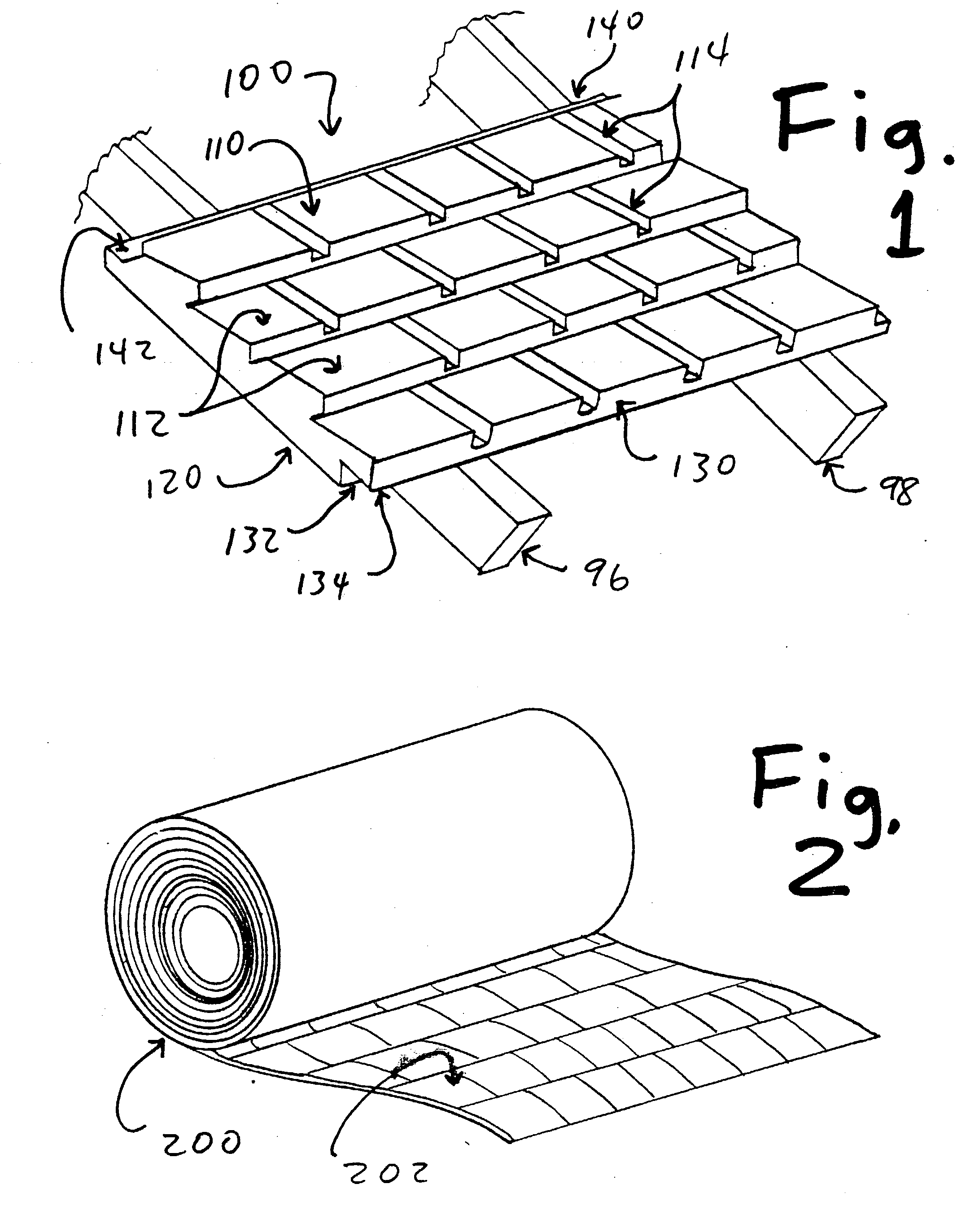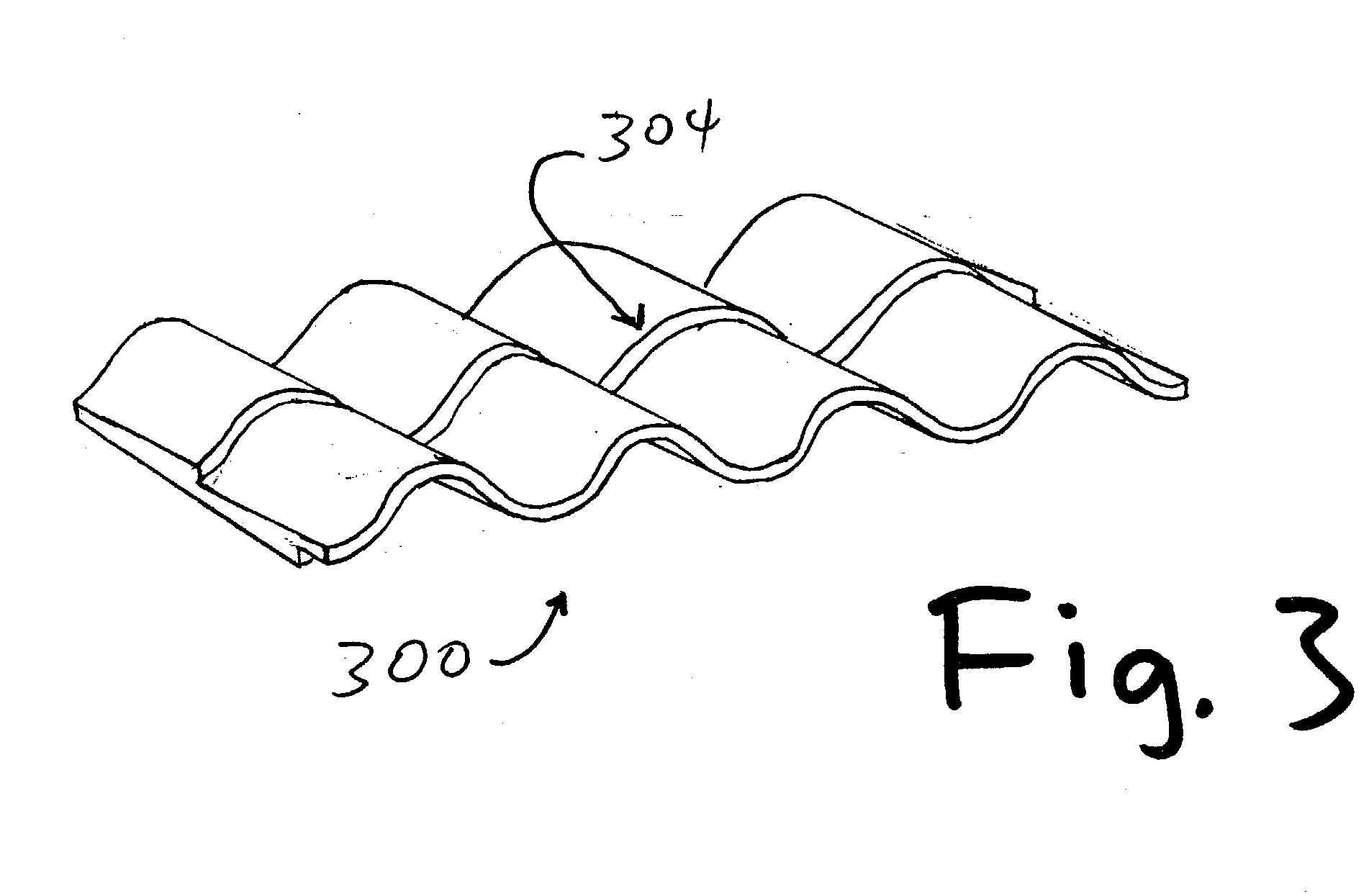Roofing materials made with nylon fiber composites
a technology of nylon fiber and composites, applied in the field of building materials, can solve the problems of inability to achieve the level of consistency, uniformity, uniformity, and uniformity, and achieve the effects of enhancing drainage or other useful traits, and reducing the number of shredded carpet segments
- Summary
- Abstract
- Description
- Claims
- Application Information
AI Technical Summary
Benefits of technology
Problems solved by technology
Method used
Image
Examples
Embodiment Construction
[0076] As briefly summarized above, this invention relates to roofing materials made of composite materials that contain synthetic fibers, such as nylon fibers. If desired, such fibers can be obtained economically from sources such as discarded carpet segments (either as “post-industrial” waste that was never installed or walked on, or as “post-consumer” waste that was installed on a floor and subsequently removed). Alternately, because of the high levels of utility, durability, and value that can be provided by the roofing products disclosed herein, virgin fibers can be purchased and used if desired, either alone, or mixed with recycled fibers.
[0077]FIG. 1 illustrates a segment of roofing material 100 that can substitute for both (i) an outer layer of shingles, and (ii) an underlying structural supporting sheet, normally made of plywood or OSB. Roofing segment 100 is shown resting on two rafters 96 and 98, with conventional 15 to 18 inch spacing. For clarity of illustration, segme...
PUM
| Property | Measurement | Unit |
|---|---|---|
| thick | aaaaa | aaaaa |
| thick | aaaaa | aaaaa |
| thick | aaaaa | aaaaa |
Abstract
Description
Claims
Application Information
 Login to View More
Login to View More - R&D
- Intellectual Property
- Life Sciences
- Materials
- Tech Scout
- Unparalleled Data Quality
- Higher Quality Content
- 60% Fewer Hallucinations
Browse by: Latest US Patents, China's latest patents, Technical Efficacy Thesaurus, Application Domain, Technology Topic, Popular Technical Reports.
© 2025 PatSnap. All rights reserved.Legal|Privacy policy|Modern Slavery Act Transparency Statement|Sitemap|About US| Contact US: help@patsnap.com



